










Whether or not you have been reading my columns, I thought it high time to delve into what psychology is.
According to the Oxford Dictionary it is:
1. the scientific study of the human mind and its functions, especially those affecting behaviour in a given context; and
2. the mental characteristics or attitude of a person or group.
The word psychology is derived from the Greek word psyche, meaning spirit or soul. Psychology sits between the natural sciences, such as biology and physiology, and the social sciences, including anthropology.
Psychologists measure intelligence through IQ testing, memory by cognitive testing and stress and anxiety with questionnaires.

Our subjective experience is our internal guide to how we think and feel. We are the way we are because of where we have come
JUDAICA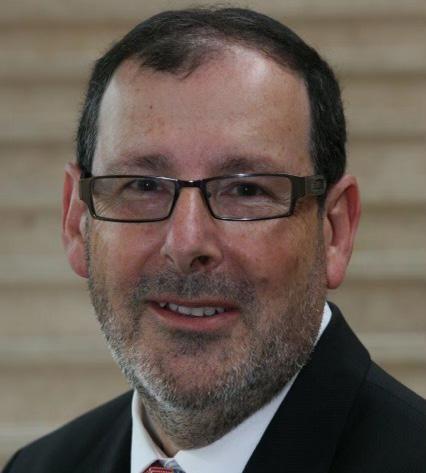
Each month, readers of the Jewish Report are treated to an original Judaica quiz compiled by Rabbi David Freedman. It has become a popular feature at countless Shabbat tables across town for good reason bringing together family and friends with much learning and laughing along the way. Rabbi Freedman effortlessly weaves in so much accrued and treasured knowledge, drawing on sources that are based on the bible, culture, sport, geography, history and more – always viewed and transmitted through a Judaica lens.
Enjoy with your mishpachah and expand your Jewish horizons in the most wonderful way.
1. According to legend, what did Rabbi Judah Loew of Prague (known as the Maharal; 1525-1609) create to defend the Jewish community from anti-Semitic attacks?
2. Which American Jewish playwright wrote Rosemary's Baby (1967), The Stepford Wives (1972), and The Boys from Brazil (1976)?
3.Which popular Hebrew song, the melody of which is based on a Hassidic nigun, was composed in 1918 to celebrate the Balfour Declaration and the British victory over the Turks in 1917?
4.What is the largest synagogue in Europe?
As an ordinary member of the tribe in the same situation you take flight because you are not equipped to fight in that situation.
Psychologists study the mind and behaviour and that includes conscious and unconscious phenomena. We are interested in interpersonal relationships and psychological resilience.
While psychological knowledge is often applied to the assessment and treatment of mental health problems through counselling, psychologists also work in the fields of education, sport, forensics and industry.
To end, here are few fast psychological facts:
The way we dress often connects to our mood. If we perceive a rule to be too strict, we are more likely to break it.
from (anthropology) and how we are made (biology and physiology).
We use our inherent fight and flight response to keep ourselves safe from danger and our physiology responds in the same way it did with our ancestors.
Consider early man. You are the hunter of your tribe, experienced and armed with spears when you come face to face with a sabre tooth tiger. What do you do? You fight because you are equipped to do so.
5.When the Israelites arrived at Elim (Exodus 15) how many palm trees did they find:
a) 20
b) 50 or
c) 70?
6. Tarshish was the name of a short-lived political party in Israel founded by Moshe Dwek. What did Dwek steal from the Israeli army and then throw at David Ben Gurion while the Knesset was in session on October 29, 1957?
9. Rabbi Chaim of Volozhin (1749 - 1821) was the most outstanding disciple of which famous Lithuanian rabbi?
10. In which countries would one have found the Jews of:
a) Kaifeng
b) Cochin &
c) Yangon - formerly Rangoon?
11. In the three Talmudic tractates Bava Kamma, Bava Metziah and Bava Batra –what does the word Bava mean?
12.Six years after Herzl's political
The pain of being ignored has a similar chemical effect to a physical injury. Optimism can be taught – even self-taught.
Anne-Marie Elias is a psychologist in clinical practice for 25 years.

16. Aryeh Deri is the leader of which Israeli political party?
17. Jillian Segal AO is the president of which Australian Jewish organisation?
18. Which mitzvah (religious obligation) is alluded to in the final sentence of the 1st paragraph of the Shema?
19. Before the construction of its permanent home, which Israeli institution met at different times at the Jewish Agency building in Jerusalem and the Kessem Cinema in Tel Aviv?
20. Who composed the words, ‘Holy, holy, holy is the Lord of Hosts, the whole world is full of His glory.’
21. In kilometres, how far does the State of Israel stretch from north to south?
22. Which American Jewish author wrote Tropic of Cancer, Black Spring, Tropic of Capricorn and The Rosy Crucifixion trilogy (all of which were banned in the United States until 1961)?
23. Which three Canadian cities have the largest Jewish populations?
7. The first El Al flight took place in September 1948. This flight flew to Tel Aviv – which European city was the point of origin:
a) Athens
b) Milan
c) Geneva or
d) Amsterdam?
8. Which Israeli, born on 6 December 1981 in Haifa, is an Israeli mentalist and self-described "mystifier" who performs "supernatural entertainment"?
pamphlet, Der Judenstaat (The Jewish State) he wrote a novel in German about his vision of a Jewish return to the Land of Israel – by what title was it known?
13. Elizabeth Taylor married eight times to seven men. Name the two who were Jewish.
14. The Biblical text recounts that Goliath was "six cubits and a span" in height – approximately how tall would this be in metres or feet?
15. Masada was extensively excavated between 1963 and 1965. Which Israeli archaeologist and former military Chiefof-Staff led the expedition?
24. Julien Wiener, former Australian Test cricketer, played for which state in the Sheffield Shield?
25. The Siloam or Shiloah inscription was an ancient Hebrew inscription found in the Siloam tunnel which brought water from the Gihon Spring to the Pool of Siloam, in the City of David. The inscription was removed from the tunnel in the 19th century and is currently located in which museum?
Good luck. Enjoy. Hopefully, learn something new about your Jewish heritage and tradition.
A group of 16 young adults from across Australia recently embarked on an amazing adventure to Israel with the Jewish National Fund (JNF). As part of the JNFuture leadership delegation, the trip celebrated Israel's 75th birthday, nurturing Jewish continuity and fostering young adult leadership. The tour was led by Eldad Shoham, the JNF Melbourne-based shaliach, who shared his knowledge and expertise with the participants.
Israel was showcased through a diverse range of experiences. Participants ventured into the desert and picked vegetables, symbolising a commitment to sustainability and the environment. They explored the vibrant start up scene, witnessing Israel's remarkable innovations and entrepreneurial spirit. The itinerary included visits to historic and cultural sites, while the delegation also engaged with JNF projects across the country.
They saw the direct impact of the support for the land and its people. Interacting with diverse beneficiaries,

they heard powerful stories that shed light on the complexities of the region. From the arid Negev to the border communities living in kibbutzim, the challenges faced became tangible. They came to understand the importance of supporting and uplifting these communities.
Melbourne participant Nat Gunn said she was grateful for the experience. "The journey allowed me to witness first-hand the impact of JNF on the land and people in Israel and around the world. I am proud to be part of the JNFuture Committee, supporting the change that Israel has achieved with JNF's help."
Fellow participant and committee member Jesse Klass highlighted the remarkable opportunity to observe JNF Australia's efforts. "Embarking on this spectacular journey through Israel alongside an extraordinary group of like-minded young professionals was truly inspiring."


Delegates returned to Australia as passionate advocates for JNFuture. Their Israel experience equipped them with knowledge, skills and a renewed passion for guiding and shaping their communities.
JNF Australia is gearing up for its highly anticipated annual event, set to be held this September. The event promises to be a memorable evening, featuring two distinguished keynote speakers.


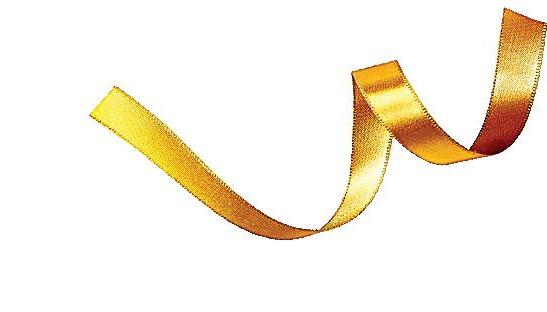

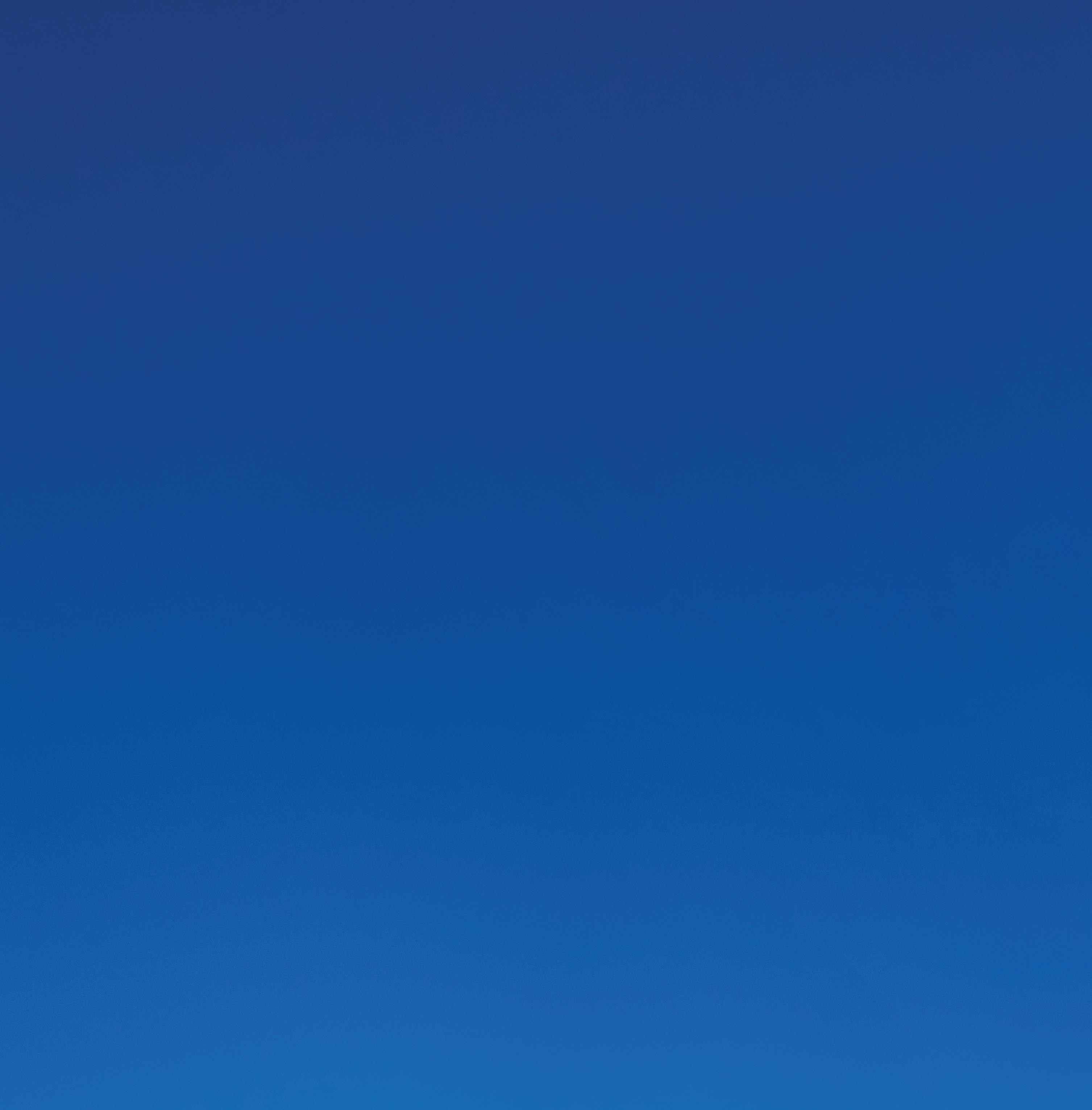
Noa Tishby, known for her powerful rhetoric and immense social media following, will share her experiences as Israel's former Special Envoy for Combating Antisemitism and Delegitimisation. Her presence is particularly significant as 2023 marks Israel's 75th year of independence, highlighting the nation's resilience and innovation.

Joining Tishby on stage will be Lt. Gen. Aviv Kochavi, the IDF's 22nd Chief of Staff. During his tenure, he oversaw the defence of Israel during Operation Guardian of the Wall, which resulted in the destruction of Hamas' extensive tunnel system. Under his stewardship, Israeli troops defended their citizens against 4,500 rockets fired from Gaza and riots in the West Bank and East Jerusalem.

The JNF Annual Event not only offers inspiring keynote speakers, but also supports a vital project. Funds raised will go towards

a critical project to strengthen Israel’s south, specifically Soroka Medical Centre in Be'er Sheva. JNF Australia will partner with Soroka to revitalise the hospital’s grounds and transform its outdoor spaces into a beautiful healing oasis envisioned by David Ben-Gurion.
The Healing Gardens will become a vital component of treatment, recovery, and rehabilitation for more than 1.2 million residents of the south, including 750,000 patients and 3,000 children who seek treatment for chronic illness.
Ronit Fraid, President of the JNF Victoria, expressed her excitement at the event, urging the community to join in supporting the Soroka Hospital Healing Gardens project. “I very much look forward to welcoming you to our 2023 Annual Event to support a most deserving cause. We are honoured to welcome our wonderful guests who will inspire and entertain us in this significant 75th anniversary year of Israel’s independence.”
Don't miss this exceptional evening of inspiration and resilience.To book your place at the JNF Annual Event, go to www.jnf.org. au/vic-gala or call 1300 563 563.
In Melbourne, a massive project aims to bring Jewish organisations, museums, communal groups and restaurants to a one-stop destination.
Melbourne is home to a vibrant Jewish community. More than 60 synagogues, 10 Jewish day schools and a dozen kosher restaurants serve some 60,000 Jews, from Bundist to ultra-Orthodox. There’s a lively Yiddish scene and an eclectic Jewish arts’ scene, including a Jewish film festival, a Jewish comedy festival, a festival of Jewish books and a festival of Jewish arts and music.
Each of these Jewish cultural organisations and festivals currently operates independently, often with a small number of staff and volunteers. However, if one of the most ambitious building infrastructure projects in Australia’s history can get off the ground, things in Melbourne may soon be changing.
The proposed Jewish Arts Quarter (JAQ), developed in collaboration with the Jewish Museum of Australia: Gandel Centre of Judaica, Kadimah Jewish Cultural Centre and National Library and Sholem Aleichem College, will create a new, one-stop arts and cultural destination in Melbourne. With an estimated $70 million price tag, the project is centred around the creation of a hub that will include museums, education facilities, food, festivals and open public spaces. Anchored by the Holocaust Museum, the Kadimah Jewish Cultural Centre and National Library, and the Jewish Museum of Australia, the JAQ will host Jewish theatre productions and performances, art exhibitions, buskers and literary events, as well as lectures, film nights and street festivals.

JAQ will be based in Elsternwick, which already has some Jewish infrastructure, but many buildings, some sitting on land worth millions of dollars, are underutilised (as little as five to six hours a week).
“At the moment, many people in our community don’t fully appreciate our facilities because they don’t go there,” said Joe Tigel, a director of JAQ, who is also the president of Kadimah Jewish Cultural Centre and National Library.
“When we raised the idea of JAQ with [the local suburban] council, they were excited. The suburban council is looking for evocative spaces and better ways of attending without everyone having to drive everywhere. The council thought it would be great for us to build a great gathering place while preserving culture. We know if we get this right, people will come in from the margins to participate.”
The construction of the JAQ will take place in two phases. Phase one will relocate the Jewish Museum of Australia to 7 Selwyn Street in Elsternwick, so that it shares a building with the Kadimah Jewish Cultural Centre and National Library, which has been located in Elsternwick since the 1960s. It will involve selling off Jewish Museum assets from the space it has occupied since 1995 and rebuilding Kadimah to include both institutions in the one combined, refurbished building. As a result of this move, the Jewish Museum will double in size and Kadimah will have a new performing arts space.
Next door to this new joint museum will be a refurbished Holocaust Museum, which has been located in Elsternwick since 1984 and, independent of the JAQ project, is currently undergoing major renovations. These facilities will cater for increased capacity for educational and communal programs. The new combined site “will be transformed into a purpose built, multi-
use facility –the epicentre for Jewish arts, culture and life in Melbourne,” said Kylie Appel, the head of engagement at JAQ. “JAQ will increase participation and allow both organisations to reimagine the future of arts and culture in a new state of the art facility to cater for the growing demands and needs of the community.”
Phase two of the project will involve the creation of new restaurants and cafes (some of them kosher) as well as the establishment of co-working and performing arts spaces in the streets surrounding the newly refurbished museums. All the organisations that are part of JAQ will continue to remain independent, but the hope is that the proximity of so many organisations and the combination of two museums next door to a refurbished Holocaust Museum will lead to a great deal more collaboration and resource sharing.
“It’s not just about a building; we are creating great spaces for our community and beyond,” said Tigel. “When we started this project [about five or six years ago], we had a vision that you don’t need a ticket to something in order to come to visit JAQ. If we do this right, we will have an environment where people will want to come and be there. That’s a vision that takes belief and discipline.”
So far, phase one of the Jewish Arts Quarter has the backing of the local council, along with support from the state and federal governments. The Victorian government has pledged $7 million and JAQ is looking for a financial contribution at federal level. JAQ has assistance from the Gandels, who have committed a generous grant from their Foundation to support phase one. It is also in the process of raising $30 million through a mix of community fundraising and philanthropy.
The hope is that similar to other ambitious projects like the JW3 in London or the Schwartz/Reisman Centre in Toronto –which are similar in scope to JAQ – the precinct will revolutionise the way Jews of all ages gather in Melbourne, offering a full array of programming most nights of the week and on weekends.
“JAQ will provide a place for meaningful connection through the facilitation of Jewish life, arts and cultural experiences in all its forms. Now, more than ever, we need projects like JAQ to bring people together,” said Appel. “The diversity of Melbourne needs a multicultural beacon
to help build bridges and create pathways to tolerance, respect, understanding and a sense of community belonging. We hope that JAQ will become a contemporary central hub and go-to place – the cool place to hang. When you have a space that’s welcoming, you embrace the broader community through knowledge and engagement experiences. This is the future of outreach that is inclusive to all.”
After the construction of these buildings finishes and phase two begins, the idea is that JAQ will continue to exist as an entity that oversees the scheduling of activities in the Jewish Arts Quarter and manages the tenancies of restaurants, cafes and the co-working spaces to ensure that the area remains a vibrant hub.
“Having the two museums together is an opportunistic element,” said Tigel. “We will have tens of thousands of students come through, where they will learn about Holocaust studies, and then go to the Jewish Museum and learn more about the Jewish communities in Melbourne. Consolidating the key assets makes a lot of sense. Organisations are continually evolving and we see JAQ providing endless possibilities for collaboration and sharing of resources and facilities.”
“In Melbourne we have missed some opportunities to create better places,” said Tigel. “In the 1960s Kadimah was the best attended community centre in Melbourne. People who came to Melbourne had immigrated out of trauma and they needed that sense of place that was not that different from Europe, albeit shtetls and towns. [In the 21st century] I don’t think anyone wants to do a segregation model. In the diaspora, we face many challenges, including declining engagement, but you need to create an environment where you feel you are part of it. There are too many facilities that don’t serve their purposes anymore.”
Two groundbreaking studies conducted on the Australian Jewish community –Gen08 and Gen17, facilitated by Monash University – provided some of the most comprehensive data on the Australian Jewish community, seeming to support the idea that new ways of engagement are necessary. In Gen17, the data noted that only 35 per cent of respondents in Melbourne said that they feel “very
connected” to their Jewish identity. JAQ aims to change this.
“The vast majority of Jews are quite secular, and we feel that JAQ fills a really important role in our community, for people who don’t go to synagogue, for people that don’t go to a Jewish school but they come to JAQ and feel a sense of belonging,” said Gary Samowitz, the strategy and fundraising director at JAQ. But an infrastructure project of this scope is not without some criticism or controversy. As one Melbourne community leader who declined to be named on the record told me, “Why are we building another … edifice when we cannot afford Jewish school fees in Melbourne? We are all busy empire building and we should be empire deconstructing.”
However, Jeremy Leibler, the president of the Zionist Federation of Australia, which is not part of the JAQ, disagreed with this assessment. “The Jewish Arts Quarter deals with arts and culture. The school’s affordability discussion is not related to this project. The community has capacity to solve the Jewish education crisis and support Jewish arts projects. They are not mutually exclusive.”
While the organisations and businesses that will be participating in phase two are not yet finalised, JAQ is open to speaking with any organisation that would like to join the arts precinct. The team at JAQ is keen to get as much community support as possible.
“We meet with all Jewish organisations one-on-one. We want their buy-in. We want them to feel a sense of ownership. This is a collaborative process,” said Samowitz.
Tigel sees the potential for greater inclusion of other faith groups and ethnicities in the JAQ as a bonus. “Non-Jews will be at the JAQ every day, visiting museums, eating at restaurants, coming to festivals,” he said. “We see this project as promoting the Jewish community, stemming the tide of antisemitism and creating bonds between ethnic communities. It’s a bit simplistic to say build and they will come, but I really believe it. If we build it and have a meaningful cultural vision, the people will come.”
For more information, go https://www. jaq.melbourne
This story originally appeared in Tablet Magazine (tabletmag.com) and is reprinted with permission.
For more than 100 years, Keren HayesodUIA has supported and empowered the People of Israel and strengthened global Jewry by fostering stronger Jewish identity and the connection of our diaspora Jewy to Israel. One of the ways to continue this vital work and secure a stable and flourishing future for Israel is by leaving a gift in a Will.


Every gift – even one per cent of an estate – will make a difference, by helping to ensure the future of Israel’s national priorities, which support Aliyah and absorption, education and mentoring youth at risk, and caring for the elderly. Your gift will ensure that the Israel we have always known and believed in will always be there – a strong, safe haven, supporting, nurturing and caring for all Jews.
The rise in antisemitism and pressure on Jewish communities globally makes the need for a strong Israel imperative. History shows us that this need will always be there and therefore we must safeguard its longterm wellbeing. A gift in your Will to Israel through UIA can provide that protection.
Tzedakah chesed and tikkun olam are proud Jewish traditions. A gift in your Will to Israel through UIA extends your commitment to these core values. By supporting UIA in this visionary way, you can save Jewish lives, strengthen Jewish identity, fortify the fabric of Israeli society and reinforce solidarity among Jewish people. You’ll be joining a special group of UIA supporters like Beverley Walter who has committed to ensure that Israel remains strong and secure in perpetuity.
The King David School’s Year 7 students started Term 3 undertaking Project Slingshot, a fast-paced learning initiative focused on innovation.

Over two days, pupils honed the valuable skills of creativity, collaboration, critical thinking and communication. Slingshot relates to the biblical story of King David defeating Goliath –projecting a message of resilience and grit, which is encouraged in students.
Your UIA legacy is an investment in Israel’s future. Pictured are at-risk youth in the Keren Hayesod-UIA Youth Futures’ program

“I recommend that people should leave tzedakah,” especially to Israel. Israel has to be nurtured and cared for in every way possible. Because of the rise of antisemitism throughout the world, we must have a home for our Jewish people to go to,” Beverley said.
“I have a belief to give with a warm hand (to give while alive) and leaving a legacy is something I have always felt strongly about and wanted to do”.
Just as Israel has always been there for every Jew, a gift in a Will through UIA means that anyone can be there for Israel and the Jewish people forever. It’s a powerful way to ensure that the Israel we have always believed in continues to exist.

For more information about how you can leave a gift in a Will, please contact Estelle Wytwornik on 9272-5533, email estelle.wytwornik@uiavic.org.au or visit uiaaustralia.org.au/leave-gift-your-will
J-AIR 88FM
After more than 10 years of operation, Australia’s only Jewish community radio station, J-AIR 88FM, recently launched its new studios in St Kilda.

The facility is equipped with two broadcast studios and a separate recording studio for producing podcasts and other pre-recorded material.
Federal member for Macnamara, Josh Burns, Victorian deputy Liberal leader David Southwick and Victorian senator
James Patterson formally opened the premises.
J-AIR chair Jim Cyngler said despite their political differences each had been forthright in advocating for the station to obtain a community broadcast licence.
“It’s great to have strong support for and acknowledgement of the importance J-AIR plays,” he said.
Cyngler said J-AIR has a vital role in promoting a wide range of Jewish community activities.
Membership remains the lifeblood of the station. To sign up, go to www.j-air.com.au and click on the “Become a Member” tab.
It can be awkward, intimidating and incredibly difficult to attend a Shiva house. Whether the mourner is a friend or family, member of the community or student, when I walk through the door, the air is noticeably heavier. Our eyes connect and Jewish law guides me not to greet them as usual, as I sit and join in their sadness. As someone who appreciates the natural cadence of human interactions, the clumsy silence that often pervades the visit adds an uneasiness to the pain. I want to offer comfort, but I know that I am not here to fix anything. I am here to sit, to share and to be. As the time to leave arrives, I echo the same words as others, connecting them to the broader mourners of Zion and Jerusalem.
Considering the experience of someone grappling with loss conjures up the traditional words of Jeremiah, recited on Tisha B’Av, the saddest day of the Jewish year: “Let him sit alone and be silent …” There are three key elements in this short phrase: sitting, being alone and in silence. Jewish law instructs the mourner to move from their regular seat to a lower chair or the floor, to stay within one primary place of dwelling and to refrain from frivolous conversations that can distract. This presents a stark contrast to some of my
non-Jewish friends that would go to a pub or bar after a funeral and drink together.
So, how do we express our emotions in healthy and appropriate ways without burying them or being buried by them?
One response has been termed by contemporary psychologists as “toxic positivity” – the avoidance of negative emotions. Unfortunately, this tendency to dismiss natural sadness can hinder personal growth and compassion, leading to heightened stress and strained relationships. An alternative, coined by Viktor Frankl, is “tragic optimism” –searching for meaning not in the event, incident or sadness itself, but in how it is processed. By embracing emotions and learning from them, individuals can gain insight, wisdom, and the ability to move forward.
No day in the year signifies this more than Tisha B’Av. It commemorates the first time the Jewish people were forbidden from entering the Land of Israel and the destruction of the First and Second Temples (586 BCE and 70 CE), as well as other horrendous tragedies throughout history – from the Spanish Inquisition (1492) and World War I (1914) to the mass deportation of Jews from the Warsaw Ghetto and Treblinka (1942). On this day, we are not visiting a mourner, but we become the mourner, as we are united in grief.
I have often struggled with this day. My natural tendency is to quickly jump in and
How many common words of five or more letters can you spell using the letters in the hive? Every answer must use the centre letter at least once. Letters may be reused in a word. At least one Jewish word will use all seven letters.

Proper names and hyphenated words are not allowed. Score 1 point for each answer and 3 points for a Jewish word that uses all 7 letters.
Rating: 19 = Good; 24 = Excellent; 29 = Genius
offer solutions rather than sympathy, to try and fix whatever may seem damaged or broken. And yet, while there is a time and place for that tendency, it is not on this anomalous day. A distinct purpose of Tisha B’Av is not to raise us beyond sadness, but to let it linger. Unlike Talmudic fasts that were centred around prayer and repentance during times of drought or danger, Tisha B'Av stands apart as a day dedicated to mourning. We do not seek a silver lining or try to rationalise the ways of God. We do not attempt to escape or distract ourselves from the pain, rather wallow in our sadness. We acknowledge, accept, grieve and sensitise ourselves to our emotional core.
On Tisha B'Av, the synagogue lights are dimmed and the atmosphere is sombre. We listen to haunting verses of Lamentations and read the Kinnot, which are elegies depicting calamities throughout the ages. In this introspective time, we embrace chaos, trials and tribulations. Unlike our usual quest for answers and action, we take a passive stance and literally sit with our sorrow. By doing this, Judaism provides a licence to mourn, embrace our vulnerabilities and feel the pain.
And yet, while Tisha B'Av may represent despair, we do not remain there. It occupies but one day of the year as it propels us towards healing and hope. It is through our mourning that we cultivate empathy and understanding. We gain insight that can transform our perspective and guide
us towards renewal. It is this belief in the future that gives us the strength to fully acknowledge suffering, transforming mourning into a profound act of faith.
This day of commemoration prepares us for joy and the rediscovery of life’s meaning in the face of aspiration. It is for this reason that the biblical source of Tisha B’Av is Zechariah’s prophecy of redemption, when the day “shall become times of joy and gladness, and cheerful feasts.” Perhaps when we attain this ultimate perspective, captured in Frankl’s “tragic optimism”, we will come to realise that grieving in the right way at the right time is just as valid as celebration, for: “Everything has a time …”
Tisha B'Av reminds us that it is okay to feel sadness, frustration and other emotions that we are often programmed to avoid. While it is only one day, it nevertheless takes a prominent place in our calendar as a day where we have permission to grieve.
Rabbi Dr. Benji Levy is a cofounder of the philanthropic advisory Israel Impact Partners, Keshev mental health center and an Al summarizing start-up called Tanna. He is the former CEO of Mosaic United and Dean of Moriah College. He teaches globally in person and online at @ RabbiBenji. For more information visit www. rabbibenji.com
Ensuring shules are places where everyone feels included has never been more important. This is especially so for people living with a disability who may otherwise feel marginalised.
But it’s not just about the mechanics, such as ramps or accessible toilets. It’s about creating tangible opportunities for those living with a disability to actively participate in the services.
An example that highlights this point occurred only a couple of years ago. My synagogue was running an event about inclusion. One of the attendees asked what the shule has done for vision impaired people who want to pray with the congregation.
Although the synagogue had purchased siddurim (prayer books) with translation in Russian and other languages, we realised that we had none for blind people. This sent the then president Gerry Bullon on a worldwide hunt for editions in braille. They are not available anywhere in Australia and were difficult to locate overseas. He eventually found rare copies of the Artscroll braille siddur in New York.
Religious faith is a belief in a Higher Power, which has created us all in His image and as equals. If we are all equals, then inclusion should be a simple fact of life and not something that should require effort to achieve.
On a personal level, my faith has given me the perspective and context I need to truly appreciate the inestimable value of every human being. It has inspired me and those I work with to do our utmost to ensure as equitable an environment as possible for all who wish to pray in the sacred space that is our shule.
Yoni Glatt has published more than 1,000 crossword puzzles worldwide, from the LA Times and Boston Globe to The Jerusalem Post. He has also published two Jewish puzzle books: "Kosher Crosswords" and the sequel "More Kosher Crosswords and Word Games".

ANSWERS PAGE 14
The price of one was ten times that of a regular prayer book, but purchasing it was not negotiable. I am proud that St Kilda Shule is the first in Australia to have done so. A synagogue cannot preach inclusion unless it puts its money where its mouth is. To me, faith and inclusion are terms that should be interchangeable.
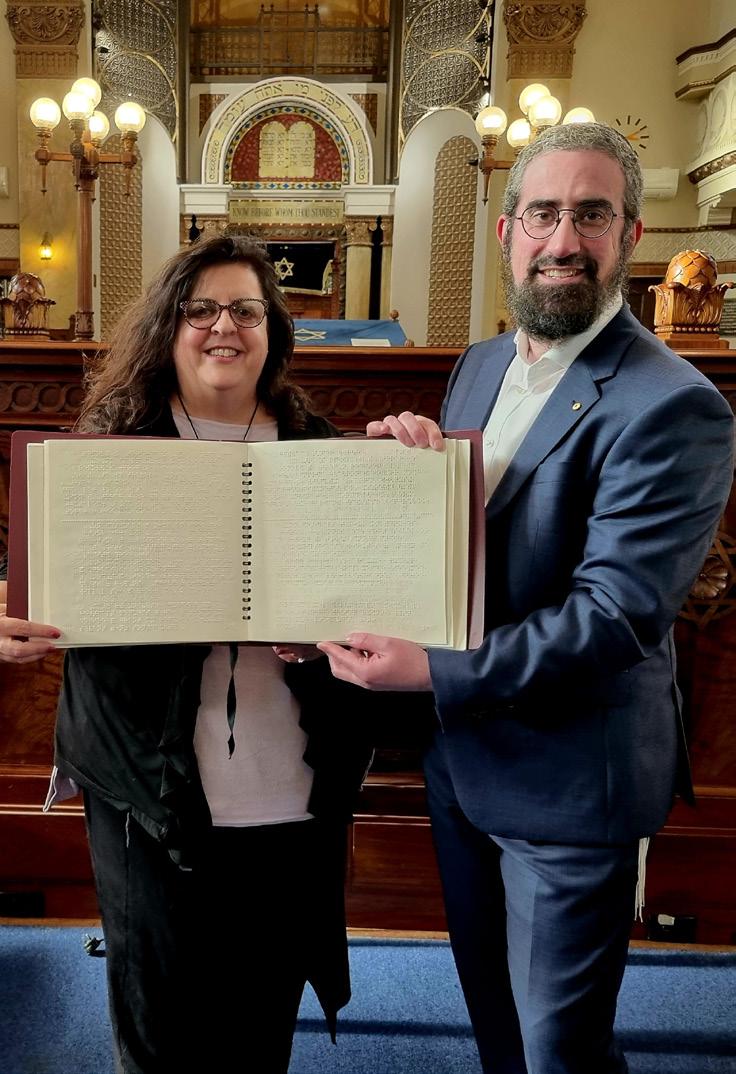
If you survey groups of Jews anywhere in the world and ask them to describe the most pressing issue facing the global Jewish community, you will get a variety of responses. Some will suggest Iran’s nuclear ambitions pose a serious security threat. Others will point to growing antisemitism that seems to constantly metastasise and withstand the test of time. Yet another group will point to growing numbers of millennial Jews who feel disenfranchised by the State of Israel, resulting in lower levels of support.
While all these are, indeed, difficulties that continue to keep some of the world’s smartest Jewish thinkers up at night, as a community rabbi, I would posit that the largest problem facing any Jewish community is the lack of unity amongst us, which presents an existential threat to our survival.

At present, Israel is going through a difficult phase. The current government is made up of many radical factions. Many problematic views have now been given a mainstream platform, from antiLGBTQIA+ sentiments to misogynistic policies designed to restrict women and ministers that call for violence against Palestinians.
It’s a worrying time in Israel, especially because it was not always an inevitability that we would end up here. The founding of the State of Israel ushered in a monumental period of collaboration between all Jewish people. When the
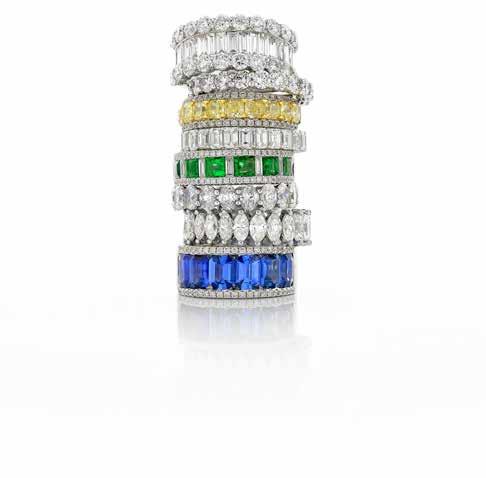
Jewish communities, both in Israel and around the world, are breaking down into subgroups more than ever before and we are forced to confront the fact that we are less cohesive than we have ever been.
If anyone needs a reminder that our strength is in our unity, the State of Israel could not have existed in its current form without Jewish unity. Recently, there was an example of outrageous and appalling behaviour by the Adelaide Festival, which chose to platform antisemites that called Volodymyr Zelensky a "depraved Zionist with a house on stolen Palestinian land”. Major corporations such as MinterEllison and PwC pulled out their sponsorship, while our community was steadfast in its response.
kibbutz movement was born, everyone had to contribute to building the Jewish dream of 2,000 years: the creation of a homeland. The unity of Jews in supporting this ambitious and, at times, seemingly impossible dream brought out the best in our collective Jewish spirit.
Jewish organisations globally sent money to support building a future homeland, with many, like the JNF, continuing to play an important role in the State of Israel. Young Jews, convinced that they were in a unique position to contribute to this once in a millennium opportunity, moved their whole lives to volunteer and contribute to the fledgling state. During the pre-state and early years of Israel, the Jewish people were united in
support of a greater purpose: the desire to establish and create a flourishing Jewish country.
When one looks at Israel and what has been created in such a short amount of time, there is little doubt that this dream has well and truly succeeded. But the growing problem in Israel and in Jewish communities around the world today is a lack of unity and domestic division. A Jewish joke goes like this: on a desert island with two Jews there are three synagogues, one for each of the Jews and one that neither would ever set foot in. On one hand, that may induce a smile and is emblematic of the bickering that occurs, but dig deeper and it reveals a real problem that exists.
RSVP: Monday, 10th April Phone

There is value in having respectful disagreements, but in a world where everything has become so polarising, the ability to respectfully disagree is fast becoming a lost art. People like to cancel each other. They don’t have patience for opinions that don’t line up with their own and the sledging and hate that comes with such territory leads us to become more divided.
VAJEX Australia
Tel: 1300 824 000 PO Box 197 Elsternwick 3185 www.vajexaustralia.org.au
Proudly sponsored by the City of Glen Eira
So, what is the solution? There is no one solution, but we must spend more time on activities that promote unity and work together to find solutions to these complex issues. In the Jewish tradition, we are obligated to see the humanity in each other. I don’t always agree with people with whom I break bread, but I always see them as human beings, deserving of my respect, no matter whether I agree with them or not.


After a busy Shabbat at Caulfield Shule, with two bar mitzvahs and an aufruf (wedding call up), I head home to finally spend some downtime with my family. As we gather for the Havdalah ritual, I notice an urgent message on my phone. Despite my curiosity, I resist the temptation to check it until we finish. It turns out to be a voicemail from a congregant whose father is gravely ill in hospital, seeking my presence and prayers.

With the support of my wife, Rebbetzin Sarah, I prepare to go to The Alfred. Arriving at the hospital, I find the family anxious and in need of comfort. Sitting with them, I offer prayers and reassurance, feeling honoured and somewhat out of place to be present in such an intimate space during their difficult time. Afterwards, I return home emotionally and physically weary, with my mind still in overdrive as I try to fall asleep.
The following day brings the heartbreaking news of the congregant's father's passing. After the morning Shacharit prayers, I sit at my desk and prepare to lead the funeral service. My goal is to provide strength and solace to the grieving family. It's a solemn duty that deeply connects with the essence of my role as a rabbi.
and lows. Working closely with my wife, we serve our community while trying to nurture our own family. Alongside our board members, office team and volunteers, we organise numerous weekly and special events, programs and educational initiatives to meet the diverse needs of our congregation. Further, I collaborate with Jewish organisations, participate in multifaith activities and serve as a volunteer police chaplain.
All require time, creativity, teamwork and, not infrequently, problem solving. I meet with many people, casually chatting with some and mediating complex family issues with others. My broader goal is to foster connection and to spread enlightenment and belonging.

capacity to deal with the demanding role. I tell them that taking care of myself is crucial. I have even written a thesis on “self-care as a rabbi”. Physical exercise is my go-to for rejuvenation and to help maintain my mental agility. It enables me to approach my responsibilities with renewed energy, clarity and focus.
Teaching and continuous learning are also essential aspects of each week. Preparing inspiring sermons and engaging classes requires patience and dedication. My own learning helps me to remain relevant and, hopefully, engaging.
Notwithstanding sombre moments, life continues to unfold. Having headed back from Lyndhurst to Caulfield, I gather all the paperwork and supplies needed to officiate at a wedding ceremony that afternoon. Transitioning from grief to joy and vice versa is not easy, but it is crucial.
Each life cycle event requires me to be fully invested in the moment, so upon arrival I always give myself a minute or two in the car with the engine off to reset my focus. The wedding turns out to be great. It is truly a beautiful part of the job to be able to celebrate so many simchas. As I lead a vibrant congregation, the rest of the week follows a rhythm of emotional highs
At home, we host Shabbat dinners, wedding classes and other smaller events. Having community members at our Shabbat table is often a highlight of the week, for it provides the opportunity to forge new friendships, explore Jewish traditions, discuss current events and create lasting memories.

A challenge not unique to a rabbinic career is prioritising family time. By way of example, I try very hard to watch my son train and play matches with the Maccabi soccer team at Caulfield Park. Unfortunately, the best of intentions is sometimes interrupted by community needs.
People often ask me how I find the motivation, energy and mental
As I rush to meet the deadline for submitting this piece, I receive a text message announcing the birth of a baby girl. I reach out to the family, eager to celebrate this precious new life. In the days ahead, I will likely answer numerous questions about a baby naming ceremony and will assist the couple to share a meaningful experience as their daughter in embraced by our faith and our community.
The life of a rabbi is far from predictable. The competing requirements often mean that I spend only one evening a week at home, but the job remains meaningful and profoundly satisfying. Indeed, it is enriching to be able to celebrate life’s many milestones and the cornerstones of our religious beliefs. Long may it be so.
The movie star and former governor speaks out against antisemitism.
Arnold Schwarzenegger’s video speaking out against Jew-hatred is going viral, racking up hundreds of thousands of views every day.
The video features the former California governor, bodybuilder and movie star speaking directly to “people who’ve stumbled into the wrong path”. Schwarzenegger describes meeting with Holocaust survivors and visiting Auschwitz and how these searing experiences reminded him how crucial it is to counter antisemitism and all forms of racism and prejudice.
Standing up to Jew-hatred is even more personal for Mr Schwarzenegger, as his own father was a member of the Nazi party. “I’ve talked a lot about my father and the broken men I grew up surrounded by in Vienna after the Second World War,” Mr Schwarzenegger explains in the video, noting that hatred ultimately leads to misery.
Growing up in suburban Graz, in Austria, Arnold Schwarzenegger knew little about the wartime exploits of his father, Gustav, a police officer and postal official. Gustav died in 1972, when Arnold was already well on his way to becoming one of the world’s top bodybuilders. As Arnold’s fame grew, journalists began to dig up evidence that Gustav had been a willing member of the Nazi party, instead of merely a conscripted soldier who had no choice but to fight.
By 1990, Arnold was a world-famous actor, living in California and was beginning to contemplate running for governor.
He turned to Rabbi Marvin Hier, who founded the Simon Wiesenthal Center in Los Angeles, a Jewish human rights organisation which researches the Holocaust, for help. He asked Rabbi Hier to find out the truth about his father.
Rabbi Hier found out that Gustav had applied for membership in the Nazi party in 1939 and was eventually accepted. The LA Times uncovered proof that Gustav had applied to join the Nazi party a few months after Kristallnacht, the pogroms that rampaged through German and Austrian cities the night of November 9 and 10, 1938, and claimed the lives of hundreds of Jews. Gustav became a member of Sturmabteilungen, the “storm troopers”, and went on to fight with the Nazi regime in some of the most brutal battles of World War II, including the invasions of France and Poland, and the siege of Leningrad.
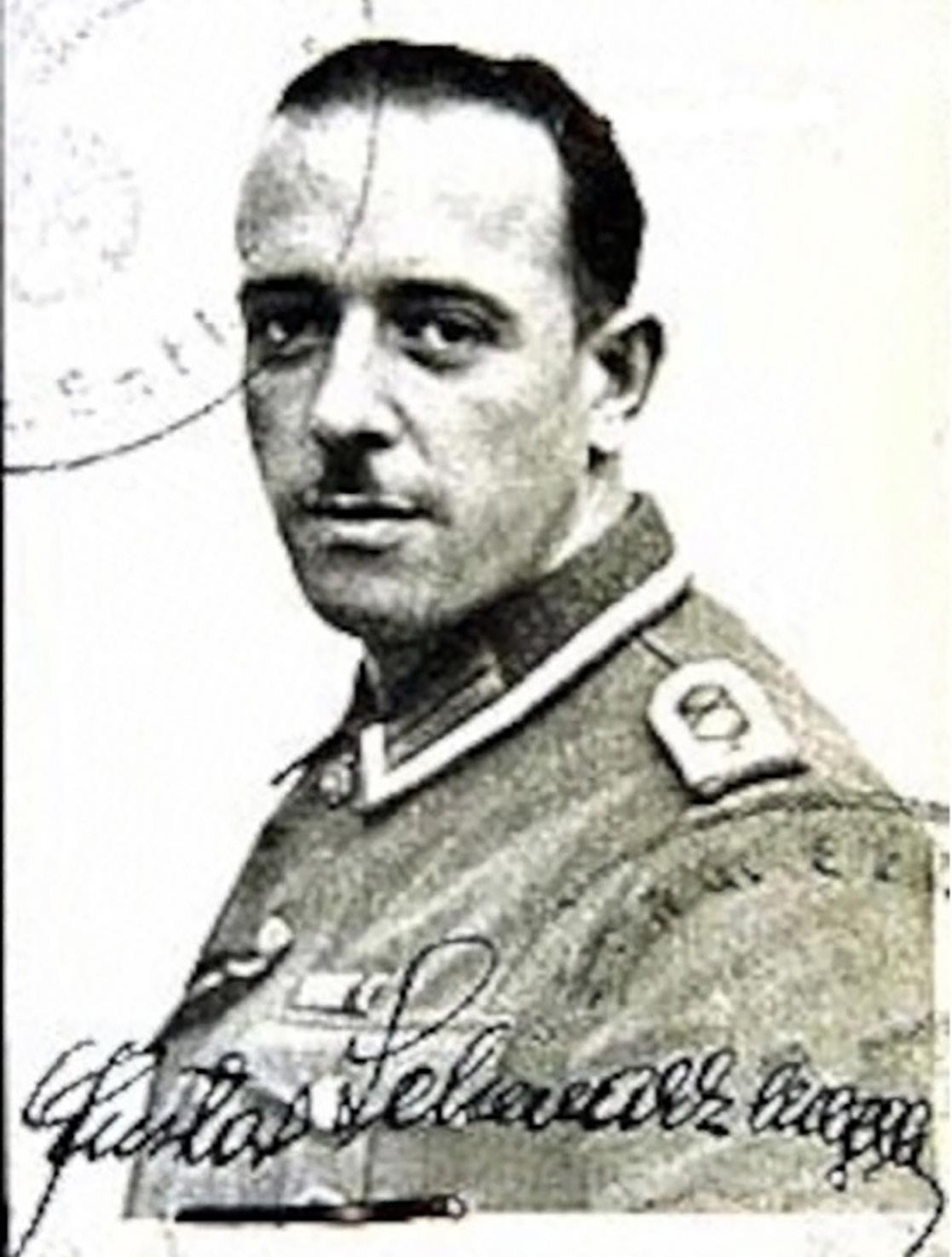
to choose a life of strength.” Sadly, we desperately need this positive message today.
2021 saw record levels of violent antiJewish attacks in the US and Britain. In the years since, it seems there’s been a not-so-subtle change: antisemitic attitudes and slurs are becoming more mainstream. Numbers back this up: a recent Anti-Defamation League poll found that the number of Americans holding negative views of Jews has jumped significantly in the past three years.
In 2019, 11% of Americans harboured anti-Jewish beliefs (defined by agreeing with six or more anti-Jewish statements out of a total of 14); by 2023, that number had jumped to 19%. In Western Europe, nearly a quarter of people polled agreed with six or more antisemitic statements; in Eastern Europe, 34% of people agreed. The situation is even more grim in the Middle East, where 74% of respondents report agreeing with multiple anti-Jewish statements.
Mr Schwarzenegger is unsparing in his description of where hate leaves people. “I’ve seen enough people throw away their futures for hateful beliefs,” he explains, describing the former Nazis of his father’s generation
Lifting weights and building muscles is incredibly difficult, he describes, but that sort of dedication and commitment to growth and success is what we all need to build strength and resilience, not blaming others for our challenges and obstacles in
A 2023 survey by resumebuilder. com asked over a thousand hiring USbased managers about their attitudes towards Jewish job candidates. Twenty six per cent of the managers admitted that they would not be eager to move forward with a Jewish candidate. Nearly a quarter – 23% –reported that they want fewer Jews in their industry.
Seventeen per cent of American hiring managers say they’ve been explicitly told not to hire Jews by their managers; Twentynine per cent report that antisemitism is “acceptable” in their company.
On social media, extreme antiJewish content runs rampant. The result is large numbers of people embracing anti-Jewish lies, often finding a community of like-minded haters to support them and parrot back their odious views.
he grew up watching. They were unhappy and wracked by selfloathing: “Besides the guilt and the injury, they felt like losers.”
Instead of finding scapegoats to explain away our problems, Schwarzenegger urges us to take responsibility for our own success.
our way. Mr Schwarzenegger warns against entering online antisemitic echo chambers, which “tell you that you’re right and they’re wrong.” In a desperate plea to reach antisemites and racists, he warns: “No matter how far you’ve gone, I want you to know that you still have the chance
In the face of rising anti-Jewish sentiment, refuse to be intimidated. Proclaim your Jewishness loud and proud. Fight back against antisemitism and racism whenever you encounter it, and to take the time to cultivate friends and allies who can help you battle rising racism and Jew-hatred. When others seek to denigrate you, proclaim your Jewishness with even greater pride and love.
Mr Schwarzenegger is unsparing in his description of where hate leaves people.
YVETTE ALT MILLER COURTESY: AISH.COM
CONSIDEREDGustav Schwarzenegger
I started a final letter to my daughter with life lessons and a last word of love after the Beirut barracks bombing in 1983.
In October 1983, in the rubble after the Beirut barracks bombing terrorist attack, after we had tried to help the wounded and dying, we began to collect personal belongings strewn throughout the site. A birthday card here, a family photograph there, all reminded us that we were not only dealing with a tragedy of 241 lives lost in our American compound (and 58 lost in the French compound, after a second attack, minutes later). This was the story of individuals, one after another, after another, after another. As Judaism teaches, each person we saved was a world and so was each person we lost. Each had a story, each had (or might have had) a family and each was cheated of the chance to touch the lives of others during a future that now would never be.
Every found object – relics now, really – touched our hearts and minds as we wondered about the human beings who once owned them and now might never reclaim them. And then, here and there, the most powerful reminders of individual lives: envelopes marked “To be opened in case of death”.
Those envelopes stopped me in my tracks, as I wondered what final thoughts, what final goodbyes, what last words of love were written on the letters inside. These envelopes would eventually be opened only if it were determined that the writers had in fact perished in the blast. In the meantime, as we collected them, each envelope reminded me of the beautiful Jewish tradition of leaving behind an “ethical will”.
The military encourages its personnel to prepare standard wills – physical wills – that outline how belongings are to be distributed if death does come to pass. However, drawing on Jewish tradition, I encourage men and women in uniform to consider writing a final letter, an ethical will of sorts, to share not only a final goodbye and a last word of love, but also to pass on lessons to others that they hoped would not be forgotten.
Many years ago, I started writing one of my own, after my daughter Malka (now 44) was born in a Navy hospital in Yokosuka, Japan. Throughout her life, she has heard my stories and sermons, and always makes me proud when she unexpectedly quotes my words after years have passed. Still, the idea of putting together a short list of ideas that have given me strength, of lessons I’ve drawn from good times and bad – some original and some I’ve learned from the words of others, or the lives of others – seems to me the best final gift I could pass on.
My hope is that my ethical will is not complete, because I’ll have some more years to continue to learn. But in the meantime, my still-in-progress ethical will includes the following thoughts:
You be humanity. When Moses saw a slave being beaten to the point of death, he looked around, but saw no other man coming to help – so he intervened to save a life. The traditional Jewish teaching from this story is: “Where there is no man, you be a man.” But a more poetic translation is: “Where there is no humanity, you be humanity.” This is advice I have given to military men and women again and again. Good enough is good enough. If you aim to be perfect at any one thing, besides never succeeding with that goal, the
rest of your life will suffer incredibly. We all must juggle multiple roles and responsibilities, from parent to partner, from worker to sibling to child to friend. The goal is to be good enough so that you don’t feel ashamed when you look at yourself in the mirror.
Listen. Rabbi David Wolpe, one of the most respected rabbis in the country, noted that one of the biggest lessons he learned throughout his career is that we must develop the ability to become better listeners. I once read that we rarely witness dialogue any longer – just two monologues with a pause to reload. Each person focuses on what he or she will rebut, rather than questioning their own assumptions and beliefs based on what they might learn. If we engage in discussion just to teach someone else, rather than to give ourselves a chance to learn or grow from another’s opinion or point-of-view, we miss the point of discussion and perhaps the point of life.
Put first things first. In the book, First Things First, which was famous when I was in college, the author notes that very few people on their deathbeds think back on their lives with regret that they did not spend enough time in the office. Decide what you would regret, and then live life with that “first thing first”. Treasure outrage but guard against rage. In Vietnam, when shipmates of mine took the first step toward actions that could not be accepted, my commanding officer taught them a lesson I have never forgotten. He said that every time we put on a uniform, we fight two enemies, not one. The first is the external enemy – at that time, it was the Viet Cong. We would fight them hard and we would fight them smart. However, we could never forget that we were also fighting the internal enemy, the animal within us that lusted for blood. If we forgot that, he said, we would remember how to fight, but forget whatever it was that we thought was worth fighting for.
In the same vein, an Army colonel in Bosnia once said to me that the Army taught him two things: how to kill people and how to blow things up. Chaplain, he said, it’s your job to help me so that I never enjoy either – and help me learn to pray for the day that neither will be necessary. For me the lesson is that we must treasure our sense of outrage, which shows there is cruelty, atrocity and even evil itself that we must never accept, must never take for granted. But we must guard against rage, when emotions take over our heart and soul, and eventually our bodies themselves, beyond any thought of right and wrong. Perception does matter. I’ve heard many people say that perceptions don’t matter: just do what is right. Without going into the question of how hard it is in so many situations to know
what is right, I have come to learn more and more how much perceptions do matter. There are many theories about leadership, but one thing they have in common is the importance of leading by example. To understand our example, perceptions are all that count.
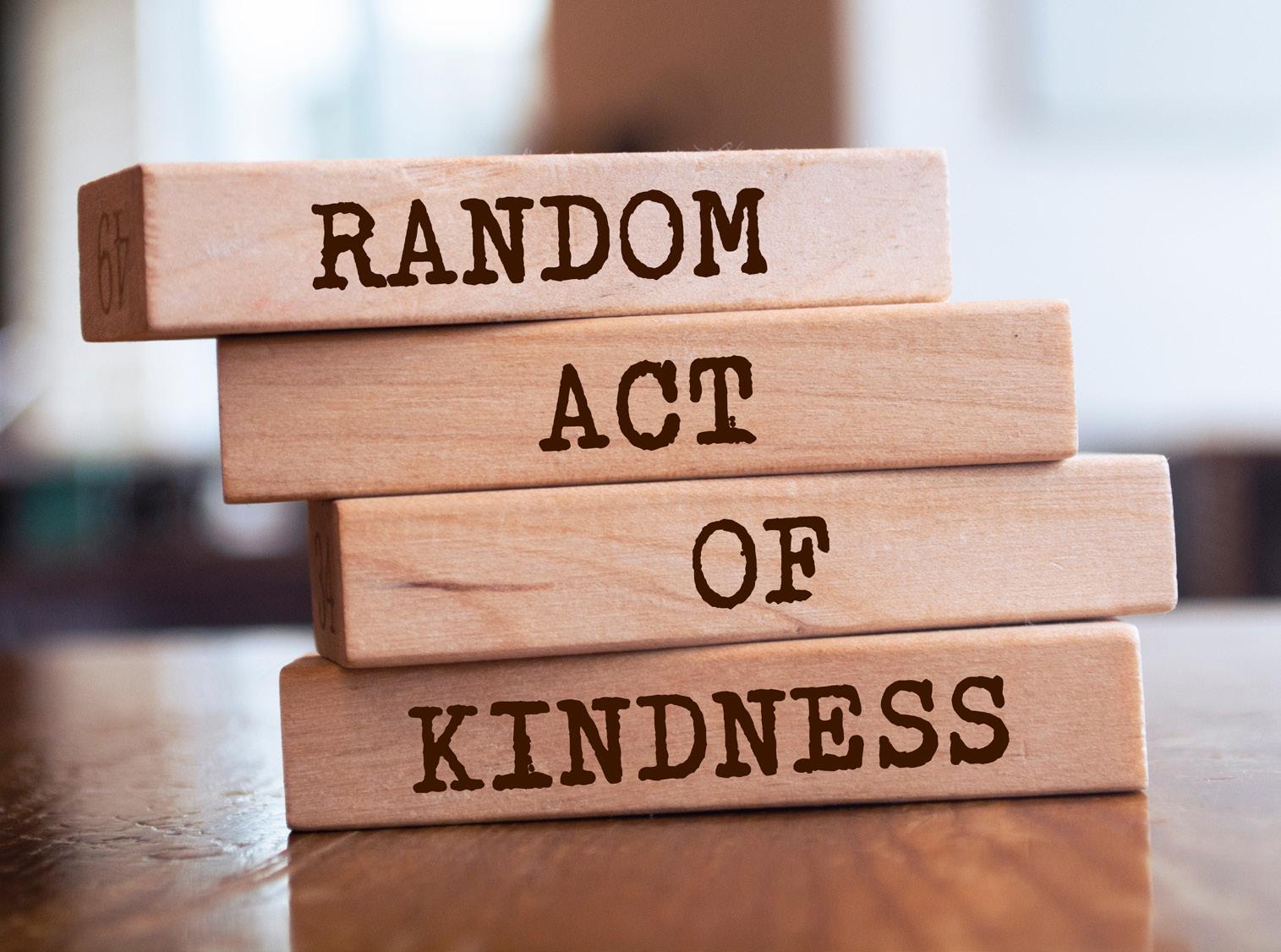
Moral muscle. I’ve heard so many times from others that we shouldn’t sweat the small things. But I’ve learned that the smallest things both lay the foundation and set the direction for bigger things, for all that will come. I think of this fact when I misbutton one button on my shirt and then need to unbutton completely and start over. I remember an early case of police corruption when an officer said if he had the chance to do his life over, he would not have accepted the first free piece of pizza. He explained that it was a small jump from accepting one slice to a whole pie and so on.
The lesson is that when we justify actions, we rarely justify as compared to ground zero or to perfection, but only to the last action that we convinced ourselves to accept. Eventually, we find ourselves lost with no moral compass at all. “Moral muscle” is the concept that just as we cannot develop physical muscle without the most basic of exercises and training, we cannot develop moral strength without exercising morals and ethics in our smallest decisions, again and again. Decision after decision, we are either strengthening our moral muscles – or our self-rationalisation muscles.
Our overlapping faiths. Some think that all religions are the same and others that all religions are completely different. I’ve learned as a chaplain that religions are different –especially when we compare ultimate visions of the end of days, so different that those visions are often mutually exclusive. However, when we focus not on the end of days, but rather on the end of today – to work together to make this day one with less fear, less suffering, less hunger and a bit more filled with hope, we can roll up our sleeves and work side-by-side. That’s when we understand how our different faiths can overlap. For me, that’s been the secret of the success of military chaplains.
Diversity is a strength. When I was in Beirut, there were foxholes and bunkers for many different warring factions: Christian for the Christian phalangists, Muslim for others, mostly Jewish for the Israelis. But our American foxholes were filled with men of differing faiths, including many with no specific religious faith, just struggling to keep their faith in humanity, their faith in the future. I thought then that if the world had more interfaith foxholes, we might have less need for foxholes and more room for faith. As I grow older, I am more
and more convinced of that truth. And, as the recently retired commandant of the Marine Corps, General David Berger taught his Marines diversity is clearly a strength we should appreciate and even cherish. When someone in a discussion, especially at a meeting, comes up with an insight that would never have been mine – because that person had different life experiences or different religious or cultural lessons that led to a different vision of the world – I give thanks for the power of diversity that can open my eyes and allow me to learn … and grow.
Rights vs responsibilities. Someone once said that it is human nature to focus on our rights and on our neighbour’s responsibilities. What a different world it might be if we did the reverse. The challenge is not to abandon our rights, but to balance them against our responsibilities to others, to our world, and even to ourselves.
Lessons from the darkest of time. When I helped create the Department of Defense guide to observances for the Days of Remembrance of the Victims of the Holocaust (DRVH), I came across the most chilling Nazi slogan imaginable: “Life unworthy of life”. That was their description of those who could be put to death. I realised then, and have been constantly reminded of it since, that we don’t leap to that idea immediately, but rather begin with the concept of life “less worthy than mine”. Eventually, we come to accept the unimaginable as rivals become enemies and enemies become less than human, dirt under our feet. When I had the honour of offering the prayer in one of the first DRVH ceremonies in the Capitol Rotunda, I included this line in my prayer: If the day has not yet dawned when we can see the face of God in others, then let us see, at least, a face as human as our own. That lesson must be heard, embraced, and shared – especially during today’s trying, divided times.
My Bible lesson. When I counsel others to make an ethical will, I recommend to those who value the Bible that they include at least one Bible teaching – and if that is not acceptable, then to include one lesson from a book or teacher whose words have touched their heart. For my life, one of the most important Bible verses comes from the Book of Esther, the book that we Jews read during the festival of Purim. When Esther, the secretlyJewish queen, must make a decision for the sake of saving the Jewish people – but one that might put her life in danger — she seeks advice from her cousin Mordecai. He tells her that he has faith that God will save our people no matter what she does. But, he asks, what if it is just for this that you were brought to the kingdom? Whenever I face a hard decision, one that might endanger my life (or, more difficult for many: one that might threaten a promotion or career), I reflect on those words. What if it were just for this moment – for this decision – that I was given life and brought to this moment in time?
This is my will – still in progress, I hope – for my daughter. Plus, the words that I love her with all my heart.
Rabbi Resnicoff is a retired U.S. Navy Chaplain, former National Director of Interreligious Affairs for the American Jewish Committee, and former Special Assistant to the Secretary and Chief of Staff of the U.S. Air Force for Values and Vision. His naval career started in the rivers of Vietnam followed by Naval Intelligence in Europe before rabbinical school and ordination. He was part of the small group of Vietnam veterans that worked to create the Vietnam Veterans’ Memorial and convinced the US military to participate in the US Days of Remembrance of the Victims of the Holocaust. He was the first chaplain to teach a course at a U.S. military war college.

"Open
I
RABBI ARNOLD RESNICOFF
RABBINIC THOUGHTKYLIE ORA LOBELL COURTESY: AISH.COM
Alexa Eden, from AlgoAI, which is creating a new AI dating app, and Aleeza Ben Shalom, star of Netflix’s “Jewish Matchmaking”, weigh in on this hot topic.

First, there was Jdate. Then there was SawYouAtSinai, JWed, and JSwipe. Now, a new Jewish dating app, mujual, will be using sophisticated AI to set up singles with the help of an AI Jewish matchmaker named Lora.
The app, which will be coming onto the market by the end of 2023, works like this: When users start up mujual, Lora greets them and steers them towards potential mates who are the best fit for them. These matches are based on a number of parameters, like personality types and preferences, discussed during the user’s time interacting with Lora. A user’s matches are capped at six per week and when matches are left un-connected, Lora enquires about the connection, hopefully making the match for both parties.
"We are deeply dedicated to making more than matches happen,” said Alexa Eden, humane technologist at AlogAI Tech, the Israel-based non-profit developing the technology.
“We focus on the future by investing our skills, talents and resources into developing relationships from the match to the marriage. Our efforts are focusing on ensuring high quality relationships, compatibility and connections.
According to Eden, most of the team members at AlgoAI Tech used dating apps in the past and became frustrated with them. They didn’t have great experiences swiping to find matches and they hoped to create something better.
“Many users may have a desire to meet someone Jewish, but with limited “Jewish only” platform options and limited compatibility matches users feel overwhelmed with searching in nonJewish spaces, or swiping through subpar matches,” she said. “We’ve instead focused on shifting the user experience to be less about swiping and more about self-discovery in the process of becoming connected with the best compatible matches.”
Mujual combines relationship science, advanced AI and machine learning to make matches. “We’ve taken a deeper look at relationship compatibility and have focused on our efforts and creating matching systems that align people on more than just their interests or attraction,” said Eden. “Instead, we’ve focused on predicting factors of healthy happy relationships between people and built a system to develop these relationships.”
The advisory board for the app includes Shirat Mallach, a couples’ therapist and relationship consultant and Dvir Kahana, former general manager of Israel’s Ministry of Diaspora Affairs, while specialists in deep learning, algorithms and AI make up the nonprofit’s professional team.
“We’re creating high quality compatibility matches for a variety of different dating markets and clients,” Eden said. But what about matchmakers who are hired to do the same? “For those who have opted to work with matchmakers, there is a consistent complaint that matchmakers do not have the time to really get to know singles,” Eden said, stating that they’re just too busy or overwhelmed to make high quality matches.
For Aleeza Ben Shalom, star of Netflix’s hit show “Jewish Matchmaking” and a matchmaker for two decades, AI dating could be a powerful tool for helping people find love. But even with all the data it can collect and analyse, she stressed that there needs to be human

oversight to ensure that the potential benefits are realised and the drawbacks are minimized.
“AI algorithms can only work with the data they are given and if the data contains bias or reflects societal norms and not someone’s true preferences, then the matches made by the algorithm will also reflect those biases,” she said. “This could reinforce existing social inequalities and biases. It's up to developers, users and “yes”, matchmakers, to use AI in a responsible and ethical way across the board.”
With all of its advantages, Ben Shalom says AI dating should also be used with caution. It could raise privacy concerns and increase risks in dating, since people are not always honest or authentic in their online profiles.
“Dating apps and online platforms are also vulnerable to catfishing and fraud, where someone creates a fake profile or misrepresents themselves online for malicious purposes,” she said. “Even someone with the best intentions will have a profile that only provides limited information about them, such as their age, location, and interests.” Ben Shalom is not worried that AI will make her job obsolete. “While AI is likely to automate some jobs and change the nature of work in certain industries, AI is simply not a replacement for human skills, such as creativity, empathy and critical thinking. Matchmaking involves a certain degree of intuition and experience. A matchmaker must be able to read between the lines, understand subtle cues and nuances, and use their experience to make informed judgments about which matches are likely to be successful.”
These intangible and unquantifiable skills will continue to be in demand, said Ben Shalom. They could even increase in demand as AI becomes more prevalent.
“No bot or algorithm will ever replace the experience of working with me,” she said. “I’m not worried at all. And, in fact, I plan to use AI to support the work I do where it’s applicable.”
Even though their approaches may be different, Eden and Ben Shalom are both focused on the same goal: to help Jews find love that will last a lifetime.
“Mujual is a non-profit, funded privately by Jewish donors, as a tool to ensure longevity for the Jewish people,” said Eden. “All proceeds go back, directly, into the development of the product to ensure a clean, ethical directive toward Jewish matchmaking.”
Dr. John Gottman, an eminent psychologist who has studied the marriage dynamic for decades, writes that he can predict the longevity of a marriage with high accuracy by observing 15 minutes of conversation between husband and wife. He can tell from their tone of interaction if there is affection and endearment or if there is resentment, sarcasm and contempt.
When I read of Dr. Gottman’s work I was impressed. But I wondered why it took him 15 minutes to reach his prediction. Wouldn’t sarcasm be detectable even sooner?
As I studied Dr. Gottman’s methodology more deeply, I realised that there was another part to his approach. After an off-putting comment, if one spouse made a repair attempt, would the other spouse accept?

Sharp words could be exchanged in any marriage. The critical factor is what happens next. Is there an attempt to repair the relationship and is that repair attempt accepted?
Repair attempts can be straightforward apologies using the classic words, “I’m sorry”. More often, the sharp comment might just be followed by a softer comment. If the spouse accepts the tone-down, then the marriage can be back on track. But if the spouse declines the repair attempt, then the conversation can well escalate into defensiveness and attacks. It is at that point that Dr Gottman feels his prediction is quite accurate.
The music of love
Most of our spoken communication has less to do with what is said and much more to do with how it is said. The tone we use, the body language we display, the ambiance we create all contribute and set the stage for
how our communication will be understood.
Perhaps even more important than the tone of an initial comment is the tone of the repair attempt. Judaism believes that people can change. Everyone makes mistakes. And everyone has the power to take charge of difficult situations and repair them.
Often, it is the tone of our voice that can make all the difference.
Try this exercise: Experiment in your mind’s ear with the various ways that the following statements and questions could be made. Go slowly because each could have as many as four or five different tones:
• Did you take out the garbage?
• Are there any carrots left in the fridge?
• It seems like there is a lot of laundry.
• How often do you think couples should have a date night?
• When does the mortgage need to be paid?
• I heard your mother is coming for dinner.
Marriage requires learning the art of diplomacy, sharing your thoughts and feelings in a filtered and respectful way. But sometimes we slip or are misunderstood. If a comment you make comes across insulting, be sure to make a repair attempt. Perhaps a comment you made was a bit harsh because you were tired, hungry or a bit on edge. Lean in emotionally and try to say something pleasant and complimentary. By doing so, you affirm that the relationship is good and that there is so much that you admire.
A critical or off-putting comment will be taken in perspective. It is just a small issue to address rather than an issue that defines your relationship.
I recall an incident from many years ago when I was not yet married. I was a guest sitting at a very pleasant Shabbat table with numerous other guests. The host graciously invited each of us to share thoughts on any topic that we thought the others might find interesting. Among the guests was a young couple; the husband was a particularly bright person. When it was his turn, he boldly quoted a statistic. He said there are 13 million Jews in the world. His wife hotly responded, “That’s totally not true. There are 17 million.”
I could see the husband's face; he was stunned and insulted. I cringed. Did she have to turn the Shabbat table into a courtroom? I wondered. Wasn’t this supposed to be a place for pleasant conversation?

A few minutes later, the wife wove a compliment about her husband into the conversation. I could see
his face ease and even begin to glow as she praised him and how he cared for their children with such parental wisdom. I realised that she knew what she had done earlier was a bit impulsive and inappropriate. A true and open apology might have been awkward and out of place. But she was sending him a clear repair attempt for her indiscretion and he was clearly receiving her endearing message.
A healthy marriage is built on these repair attempts. In the realities of life, we make mistakes. We’re not angels. Repair attempts make it clear that, even in moments of difference, our loyalty to the relationship is reliable and constant.
The impact of a repair attempt is largely in the tone. When you harness emotions such as love, endearment and respect in your voice you are sending a message much more powerful than just an apology. A repair attempt can leave a couple in a stronger place than before the off-putting comment was made. That’s why I don’t recommend that you attempt a repair attempt by text messaging or email. No matter how many emojis you add, it is hard to duplicate the power of tone in a sincere human voice.
Marriage communication is like a musical performance. It has highs and lows. Sometimes there are even simultaneous tunes competing with each other. The music of marriage has refrains and many a chorus – issues that repeat themselves again and again. And then there are special moments when two differing expressions of a melody fuse together to create an even greater experience – harmony.
We are in Paris in 1899. Take the best actor in the world, in this case a middleaged woman with a particularly healthy ego that is constantly being stoked.
Her last stage role was a critical success but failed to sell tickets.
This is a woman who doesn’t hold back – who always speaks her mind.
They came together two years ago to create Stars and the Moon, which promotes diversity and inclusivity in a supportive environment on stage.
She spends what she wants to spend when she wants to spend it, even though she claims she is now penniless.
The troupe has created a unique casting platform, which it has named CastMate.
It enables those with a physical or intellectual disability to be paired with a performer without a disability. Each role is then cast with both artistes sharing the lines.
Even though she appears to be universally lauded – or at least she is told that she is – she decides to take a very dangerous step.
She will step into the role of Shakespeare’s Hamlet at a time when this – a woman filling a man’s role – was simply not done.
With that comes a surfeit of insecurities.
In early August, the company will perform School of Rock, based on the film starring Jack Black, at the National Theatre in St Kilda.
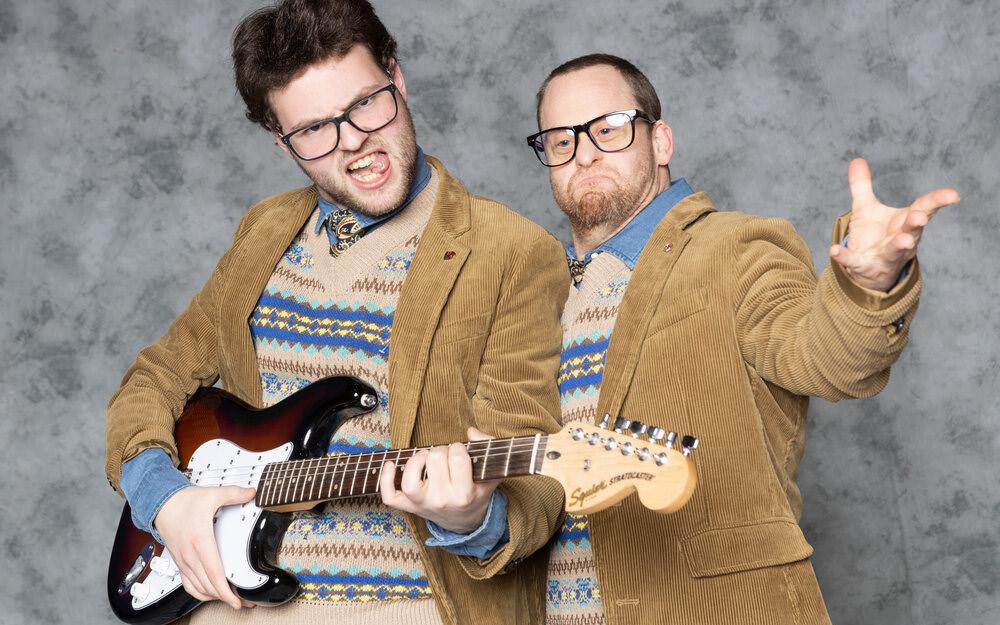
It is worth noting that she is in her mid 50s and the Prince of Denmark was but 19 years of age.
Still, she presses on.
The musical, which has been renamed School of Rock: The Inclusical, focuses on unity and resilience, is aligned with the group’s mission.
That also involves imploring a highly regarded playwright, who is married with two young children, to rewrite Hamlet and remove the poetry in the work.
Why? Because she doesn’t like it.
As he can’t say no to her – his muse as well as his lover – he proceeds, but struggles.
One scene sees every student invited to join a band, which echoes Stars and the Moon’s commitment to uplifting those that are often overlooked or unheard.
Also, struggling to create an appropriate poster of her for the
Rehearsals for the forthcoming production have generated
Lighting up the stage
He tries to stand up for himself and to her, but also seeks her adoration for his
The push and pull between the pair
Around them, the other Hamlet actors are putty in Bernhardt’s hands, inevitably With magnificent timbre in his voice, Marco Chiappi is superb as Constant Coquelin, whose command of Hamlet is
At two hours 10 minutes (excluding interval), I found Bernhardt/Hamlet engaging to a point, but a bit of a stretch. That comes down to Rebeck’s writing – not the fine acting from the 10-strong cast. I thought the first act needed tightening, ahead of the surprises in the
An interesting device used by director Anne-Louise Sarks involved sets and props being wheeled and carried in as the play unfolds. That is certainly eyeSet and costume designer Marg Horwell has done a good job across the board, taking a playful hand with the
Bergerac.
Written by American playwright Theresa Rebeck and first performed on Broadway in 2018, there is much going on in Bernardt/Hamlet.
requirement of the bolshy role.
Tracts of Hamlet are performed by Bernhardt and other cast members and often questioned by Bernhardt.
It was most appropriate that opening night was on International Women’s Day.
camaraderie, joy and creative energy. That enthusiasm is expected to translate onto stage during paid performances.

Charles Wu plays an interesting juggling act as Edmond Rostand. He adores Bernhardt, but feels some guilt
They are scheduled for 7:30pm on Thursday, August 3rd, 8pm on Saturday, August 5th and 3pm on Sunday, August 6th.

Make no mistake, there is a great deal of humour in Bernhardt/Hamlet, which –I dare say – will be production that will appeal to some more than others.
It is playing at Southbank Theatre, the Sumner until 15th April, 2023.
Tickets range from $35 (for group bookings) to $39. To book, go to https://nationaltheatre.org.au/events-list/ school-of-rock-the-inclusical/
1. The Golem
2. Ira Levin
3. Hava Nagila
4. Dohány Street Synagogue the Great Synagogue (Nagy Zsinagóga) of Budapest is Europe's largest and the world's fourth largest synagogue
5. c) 70 palm trees
6. A grenade, in an attempted political assassination. No one was killed but a number of people were injured including Ben Gurion and Golda Meir
7. c) Geneva
8. Lior Suchard
9. The Vilna Gaon (Rabbi Elijah ben Solomon Zalman)
10. a) China b) India and c) Myanmar (formerly Burma)
11. Bava means ‘gate’, hence in these three tractates, dealing with aspects of civil law, Bava Kamma means The First Gate, Bava Metziah The Middle Gate and Bava Batra The Final Gate
12. It was known as Altneuland, The Old New Land
13. Mike Todd (born Avrom Hirsch Goldbogen) and Eddie Fisher
14. Just under 3 metres or almost 10 feet tall
15. Yigal Yadin
16. Shas. Shas is a Haredi religious political party founded in 1984 under the leadership of Rabbi Ovadia Yosef, a former Israeli Sephardi chief rabbi, who remained its spiritual leader until his death in October 2013
17. Executive Council of Australian Jewry
18. To place a mezuzah on the doorposts of our homes
19. The Knesset
20. Isaiah
21. 424 kilometres
22. Henry Miller
23. Toronto, Montreal and Vancouver
24. Victoria
25. The inscription is held by the Istanbul Archaeology Museum, Türkiye
Jewish Answer – AVEIROT. Here is a list of some common words (“Yes”, we know there are more words in the dictionary that can work, but these words are common to today’s vernacular): ARRIVE, AVATAR, AVERT, AVEIRA, AVIATE, AVIATOR, EVITE, OVATE, OVATOR, OVERATE, OVEREAT,
OVEREATER, OVERT, REVERE, REVERER, REVERIE, REVIVE, REVIVER, REVOTE, RIVER, RIVET, ROTATIVE, ROVER, TRIVET, TRIVIA, TROVE, VETOER, VETTER and VOTER.
Questions/comments/compliments, please email Yoni at koshercrosswords@ gmail.com
Friday, Jul 28, 2023
Shabbat ends, Jul 29, 2023
Friday, Aug 4, 2023
Shabbat ends, Aug 5, 2023
5:11 pm
pm
pm
pm
The musical Parade will be staged at Chapel Off Chapel in Prahran from 27th July to 6th August. The Jewish Report spoke with producer and musical director Ben Samuel.

When was Parade last staged in Melbourne?
To the best of my knowledge, almost a decade ago at fortyfivedownstairs in Flinders Lane.
Why stage Parade and not some other musical?
Because it is highly relevant to the society in which we live today.
It provokes meaningful conversations about the persistence of bigotry and injustice in the world. The show forces us to confront uncomfortable truths

and challenges us to examine our own biases.
What should those than attend expect to see and hear?
The true story is set in Atlanta, Georgia in 1913 and revolves around Leo Frank, a Jewish superintendent at a pencil factory, who was convicted of murdering a 13-year-old girl.
The accusers were both antisemitic and racist.
The stirring score by Jason Robert Brown is a combination of blues, jazz and ragtime.
Will the show contain any surprises?
Definitely. We don’t tell the audience what to think, but we certainly set out to provoke them.
To buy tickets, go to https:// chapeloffchapel.com.au/show/ parade/
Friday, Aug 11, 2023
pm
pm Shabbat ends, Aug 12, 2023
Except where expressly stated otherwise, content in The Melbourne Jewish Report is provided as general informations only. The articles in this paper have been contributed by a third party. The opinions, facts and any media content here are presented solely by the author, and The Jewish Report assumes no responsibility for them. It is not intended as advice and must not be relied upon as such. You should make your own inquiries and take independent advice tailored to your specific circumstances prior to making any decisions. We do not make any representation or warranty that any material in the papers will be reliable, accurate or complete, nor do we accept any responsibility arising in any way from errors or omissions. We will not be liable for loss resulting from any action or decision by you in reliance on the material in the papers. By reading the papers, you acknowledge that we are not responsible for, and accept no liability in relation to, any reader’s use of, access to or conduct in connection with the papers in any circumstance. Photographs submitted by individuals or organisations are assumed to be their property and are therefore not otherwise credited. All articles in this paper have received the expressed consent of the author to publish in this paper.
The Jewish Report; ISSN 2204-4639
Publisher: The Jewish Report Pty Ltd (ACN 167302981)
Distributor: TJR Distribution Pty Ltd ACN 165158029
Comments or suggestions to: editor@thejewishreport.com.au
Article submissions to: www.thejewishreport.com.au/article-submission-guidelines
Advertising: editor@thejewishreport.com.au
Website: www.thejewishreport.com.au
Printer: Spotpress Pty Ltd
If J. Robert Oppenheimer didn’t invent the ultimate killing machine, would someone else from a rival superpower have done so?
These are just some of the questions addressed in the superbly rendered film Oppenheimer.
Master filmmaker Christopher Nolan (Inception) has taken no short cuts and come up with a tension filled, intriguing look at how the world was changed irrevocably.
The first atomic bomb, named Little Boy, was dropped on Hiroshima on 6th August, 1945. The second, known as Fat Man, fell on Nagasaki three days later.
Total casualties exceeded 200,000.
But as much as the film deals with the consequences of those actions, Oppenheimer spends a great deal of time in the lead up to the bombs being released.
It paints a picture of a seriously gifted mind (there are frequent parallels drawn to Albert Einstein), who had shortcomings.
J. Robert Oppenheimer, as portrayed by Cillian Murphy, was a much-feted theoretical physicist.
Born into a non-observant Jewish family, he was womaniser, chain smoker and a man with Communist leanings, at least for a while.
Oppenheimer, the movie, moves between time frames. It establishes how his studies and teaching took him around the world, before he settled back in the United States.
His intellectual rigour was highly sought and he landed a job at a prestigious
The hype has been enormous, but does Barbie, the movie, live up to expectations?

Some elements do and others not so much.
This is a film populated by a surfeit of Barbies and Kens in Barbieland, where women rule the roost and men trail in their wake.
The chief Ken (bleach blonde Ryan Gosling, with a six-pack to die for) has “the hots” for principal Barbie (perfectly turned out, gorgeous Margot Robbie). Barbie, though, wants to keep things platonic. Even a kiss is out of the question.
Everything in Barbieland is picture perfect. Barbie wakes up without a hair out of place in her open house that everyone can see into and warmly greets all the other Barbies.
Same goes for the Kens’ salutations to one another, although in Gosling’s case his jealousy of rival suitors is on show from the outset.
Suddenly though, Robbie’s Barbie is strangely out of sync. She finds herself raising the issue of death with the other Barbies, before quickly checking herself.
But then, to reinforce her discombobulation, the natural, dreamy arch in her foot collapses … and she burns the toast.
college run by Lewis Strauss (Robert Downey Jr). Strauss would become chairman of the US Atomic Agency Commission.
Oppenheimer was subsequently prevailed upon to help the war effort by military officer Leslie Groves (Matt Damon).
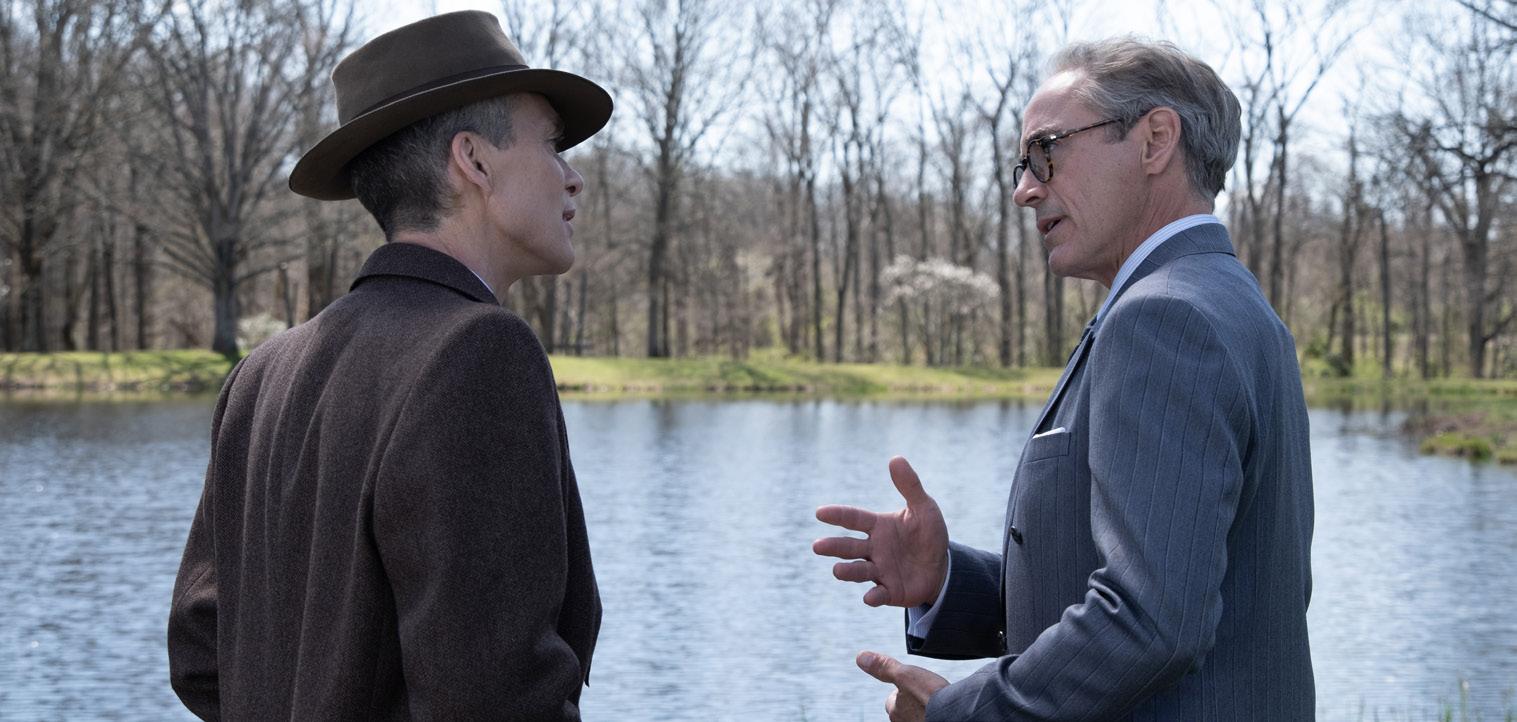
Groves had overseen construction of the Pentagon. He was charged with directing the top-secret Manhattan Project, involving the development of the atomic bomb. The intent was to end WWII sooner rather than later.
So, Groves enlisted Oppenheimer and built a small town for him in a remote part of New Mexico. That enabled the latter and his team to carry out their work in isolation.
After developing the nuclear weapon, J. Robert Oppenheimer became increasingly concerned about its use and misuse.
This was the time of Harry S. Truman, when the House Un-American Activities Committee was established to expose Americans with Communist ties.
Oppenheimer was effectively put on trial. I say effectively because the body
that investigated him wasn’t a legally constituted court.
At the same time, the pressure was turned up on the US Atomic Agency Commission chair.
Oppenheimer is an impressive film on every level.
Let’s face it, making physics – especially theoretical physics – interesting (stimulating even) to anyone other than science nerds is no mean feat.
But Nolan has managed to do just that. He has left nothing to chance and his attention to detail is commendable.
There are so many threads and characters here. Three hours is a long time, but Nolan doesn’t waste a frame. Each scene is another piece of a highly political and, at times, deeply personal puzzle.
The film is based on the Pulitzer Prizewinning book American Prometheus: The Triumph and Tragedy of J. Robert Oppenheimer by Kai Bird and the late Martin J. Sherwin.
Oppenheimer is infused with a series of scintillating performances, earnestly led by Cillian Murphy. His representation of the genius is remarkable and insightful.
Matt Damon is authoritative as his immediate superior, clearly just a cog in a bigger wheel that will see the world pivot.
Equally imposing is Robert Downey Jr, cast as a concerned, but arrogant “player”.
Emily Blunt plays Oppenheimer’s troubled, but pragmatic wife Kitty with distinction, lurching from addiction to devastation.
So, too, Florence Pugh, who excels as Oppenheimer’s lover Jean Tatlock –savvy in a bookish sense, but naïve and, ultimately, savaged.
As with many other cast members, there are notable layers to the main players’ respective performances, from which the film benefits enormously.
Josh Hartnett is cast as a pioneering American nuclear scientist and Casey Affleck as chief of Army counterintelligence at the Presidio in San Francisco.
Kenneth Branagh is a Nobel Prize winning physicist, while Rami Malek is an associate experimental physicist.
Alternating imagery in colour and black and white, Hoyte van Hoytema’s evocative cinematography draws in the audience to the cat and mouse game at play.
Ludwig Göransson’s arresting score adds another stratum to the anxiousness evident throughout.
A phenomenal cinematic achievement, Oppenheimer is undoubtedly the film of the year. Surely Oscars await.
Rated MA, it scores a 10 out of 10.
On the plus side, Margot Robbie does all she can to elevate the spectacle. It is fun to watch her transition from naive to enlightened.
Kate McKinnon all but steals the show as Weird Barbie. Her comic turn is special.
I loved the references to the Barbie creator Ruth Handler, who named Barbie after her daughter Barbara. (It was 9th March, 1959 when Ruth took Barbie to the annual Toy Fair in New York … and the rest is history.)
And the plot pivots around a heartfelt and inspired monologue by America Ferrera as Mattel’s executive secretary Gloria.
Rather than her usual practice of floating down from her house into her car, she lands heavily alongside it. And to top it off – horror of horrors – she even has cellulite … for the first time.
The other Barbies explain to Robbie that she is malfunctioning and the only one who can address her issues is Weird Barbie (Kate McKinnon).
It turns out that somehow the separation Robbie’s Barbie had from the real world has been broken.
Weird Barbie instructs Robbie’s Barbie to travel to the real world to try to find the girl who initiated the split, which she does, Ken in tow.
Let’s just say all doesn’t go according to plan and Ken gets his own ideas
about how he would like to reconfigure Barbieland.
Barbie, the movie, has some genuine, smile inducing and laugh aloud moments, but I wanted more.
For all the emphasis on girl power, which I wholeheartedly endorse, it is too vacuous. Given the writing talent involved (Greta Gerwig and Noah Baumbach, who co-wrote Frances Ha), I was hoping for more cleverness. There is certainly some of it on show, but not enough for my liking. I found the start flat and, at one point, even distasteful.
Furthermore, it is a giant – and not at all subtle – ad for Mattel. Surely the dolls sell themselves, as they have for generations.
As the narrator, Helen Mirren also finds moments to shine.
I appreciated the blend of “toyish” action with real life. I thought the filmmakers did that particularly well … and the colour palette is delightful.
A number of standout scenes include Barbie eating and drinking without food on her plate or liquid in her cup and Ken’s surfing wipe out.
In summary, while the movie has endearing features, the plotting could have been stronger.
Directed by Greta Gerwig and rated PG, Barbie scores a 6½ out of 10.





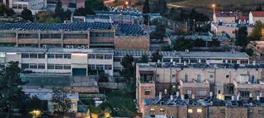




We identify and evaluate new real estate opportunities, and with the help of our market specialists, we select a handful of projects, which we believe are the most suitable for a foreign investor.
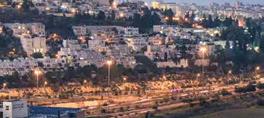
Our services include: Legal representation, property administration including opening bank accounts and assisting with mortgages. Project management and quarterly reporting.
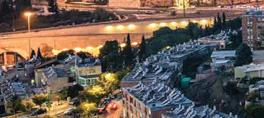
Once construction is completed we will find tenants to rent your apartment so you capitalize on your investment immediately and have peace of mind in knowing your new property is in good hands.

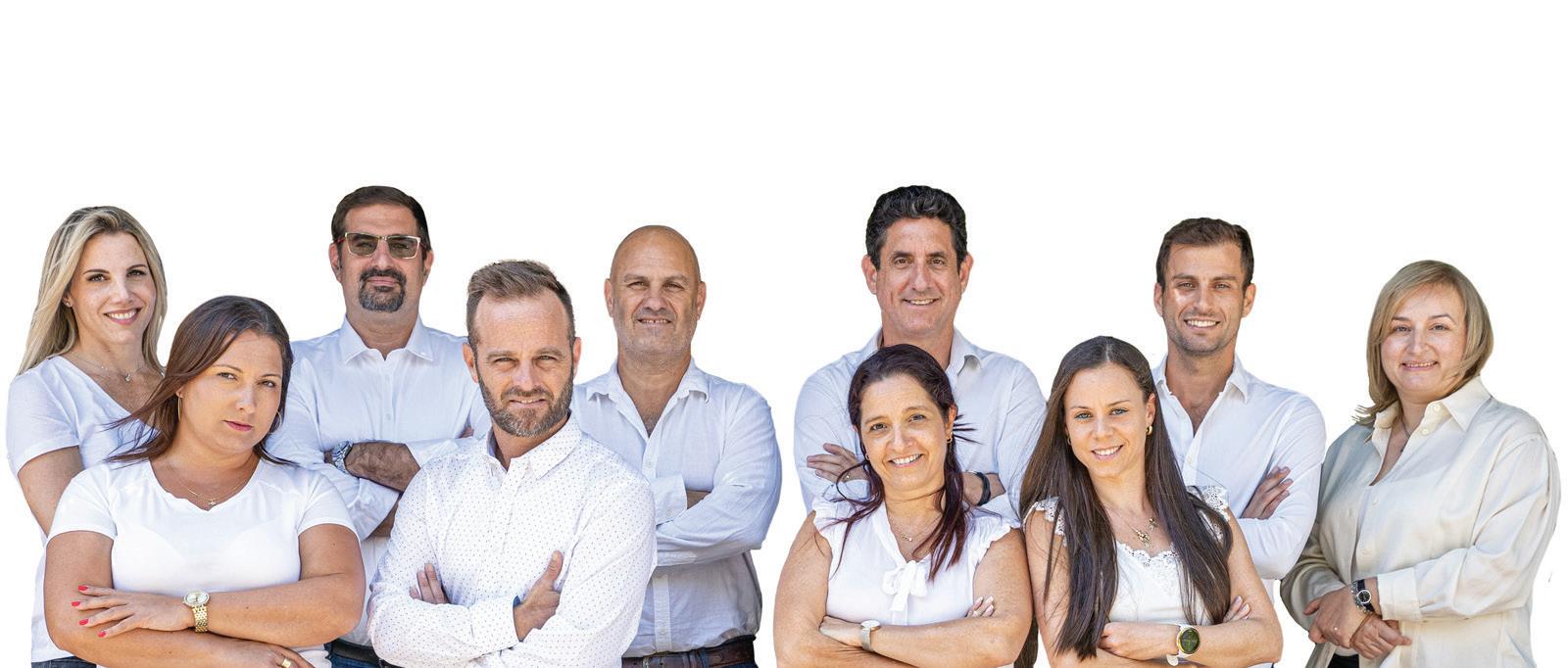


We focus exclusively on representing buyers, ensuring that each and every one of our clients is shown only properties that are relevant and meet their requirements.
